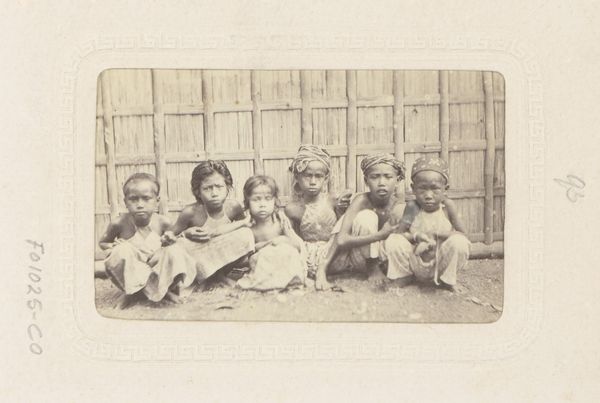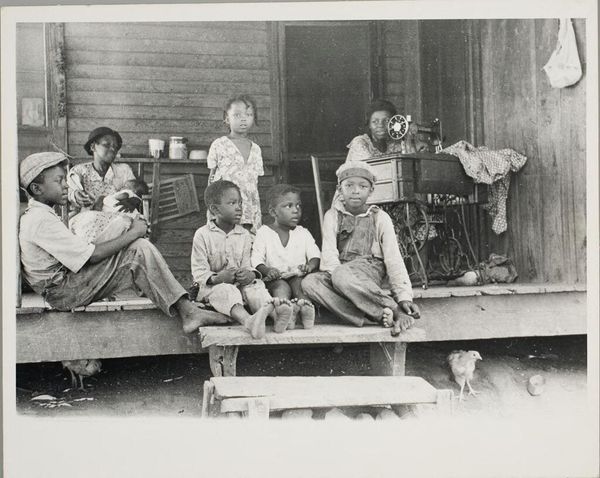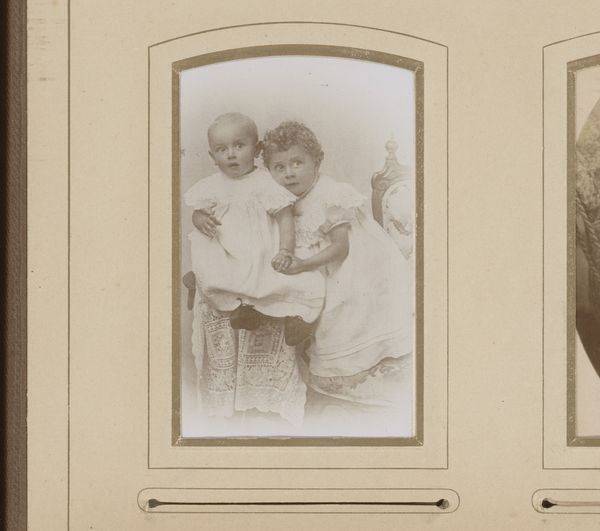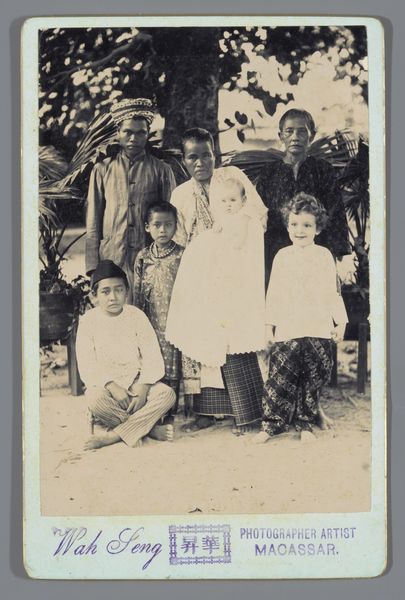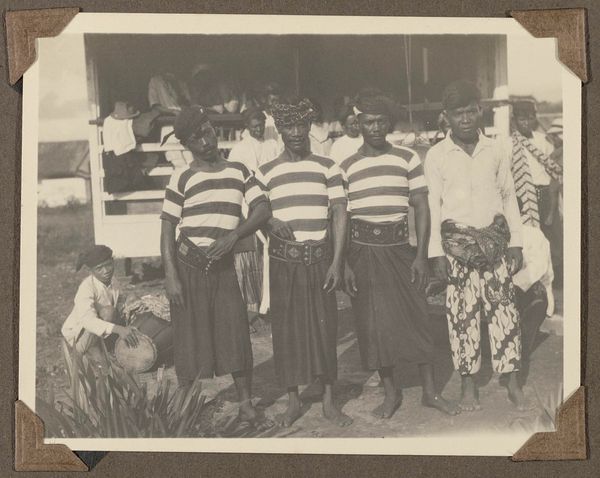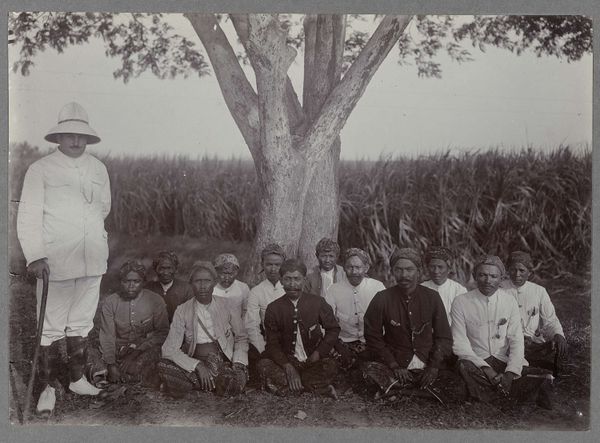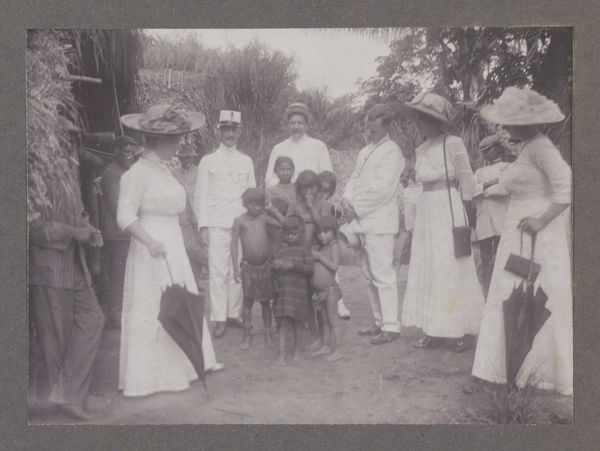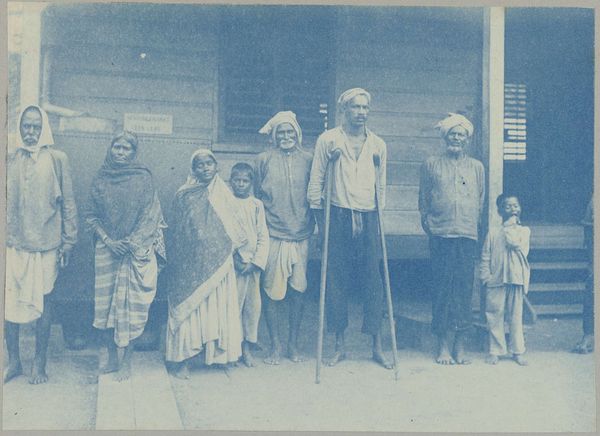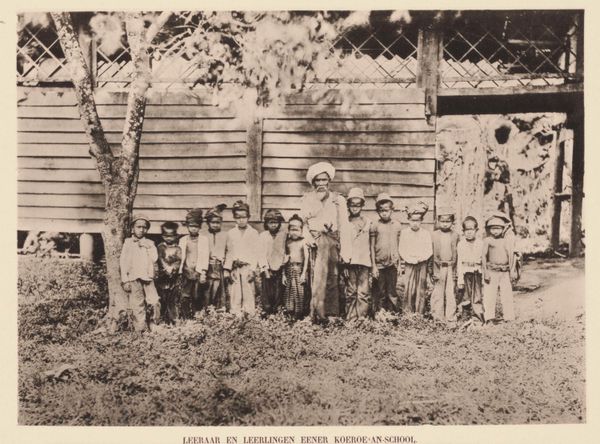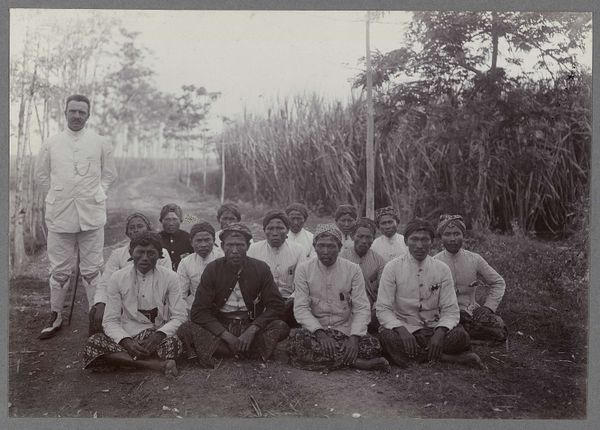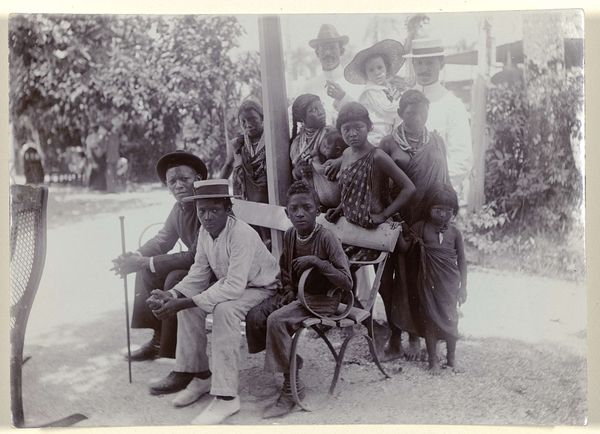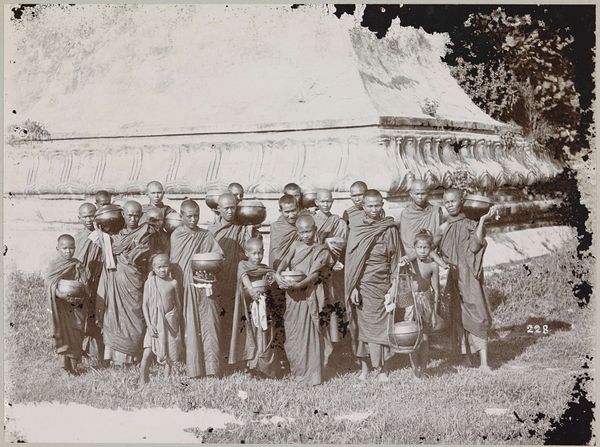
photography
#
portrait
#
african-art
#
photography
#
historical photography
#
portrait reference
#
photojournalism
#
realism
Dimensions: height 83 mm, width 112 mm
Copyright: Rijks Museum: Open Domain
Editor: So, here we have Hendrik Doijer's "Hindostaanse contractarbeiders in het immigrantendepot," a photograph taken sometime between 1903 and 1910. It depicts a group of Indian laborers. It is stark. What story can you see within this photographic print? Curator: For me, this image is fascinating because it is all about the means of its own production. This photograph gives insight into both colonial administration and plantation labor. Who was consuming images like this, and why? It is evidence of how systems of power are supported by representation. Editor: So it sounds like you are highlighting how the image's context of creation reveals something about labour relations. What’s your reading of the location, behind the figures? Curator: Exactly. This isn't just a picture of people; it's about the *labor* of representation. Look at the stark backdrop of what I interpret to be the side of a company building or warehouse - cheap and utilitarian. The physical setting, the clothing, everything indicates a carefully managed labor force, reduced to basic material needs. I see Doijer exposing the structure of a whole political system built around moving people to and controlling workers. This photograph exists as part of that machine. Editor: I see what you mean. The setting really does reinforce this idea of forced movement and controlled labor. So it's about how photography as a material practice played a role in these historical power structures. Curator: Precisely. It shifts our focus from merely admiring the image to analyzing the forces that made the image possible and those the image represents, or rather, fails to fully represent, humanising labour by shifting from aestheticizing art objects to scrutinizing labor processes involved in it. Editor: Thanks, that really gives me a fresh way of considering documentary photography beyond its face value, to understanding it as part of an ecosystem of control.
Comments
No comments
Be the first to comment and join the conversation on the ultimate creative platform.
